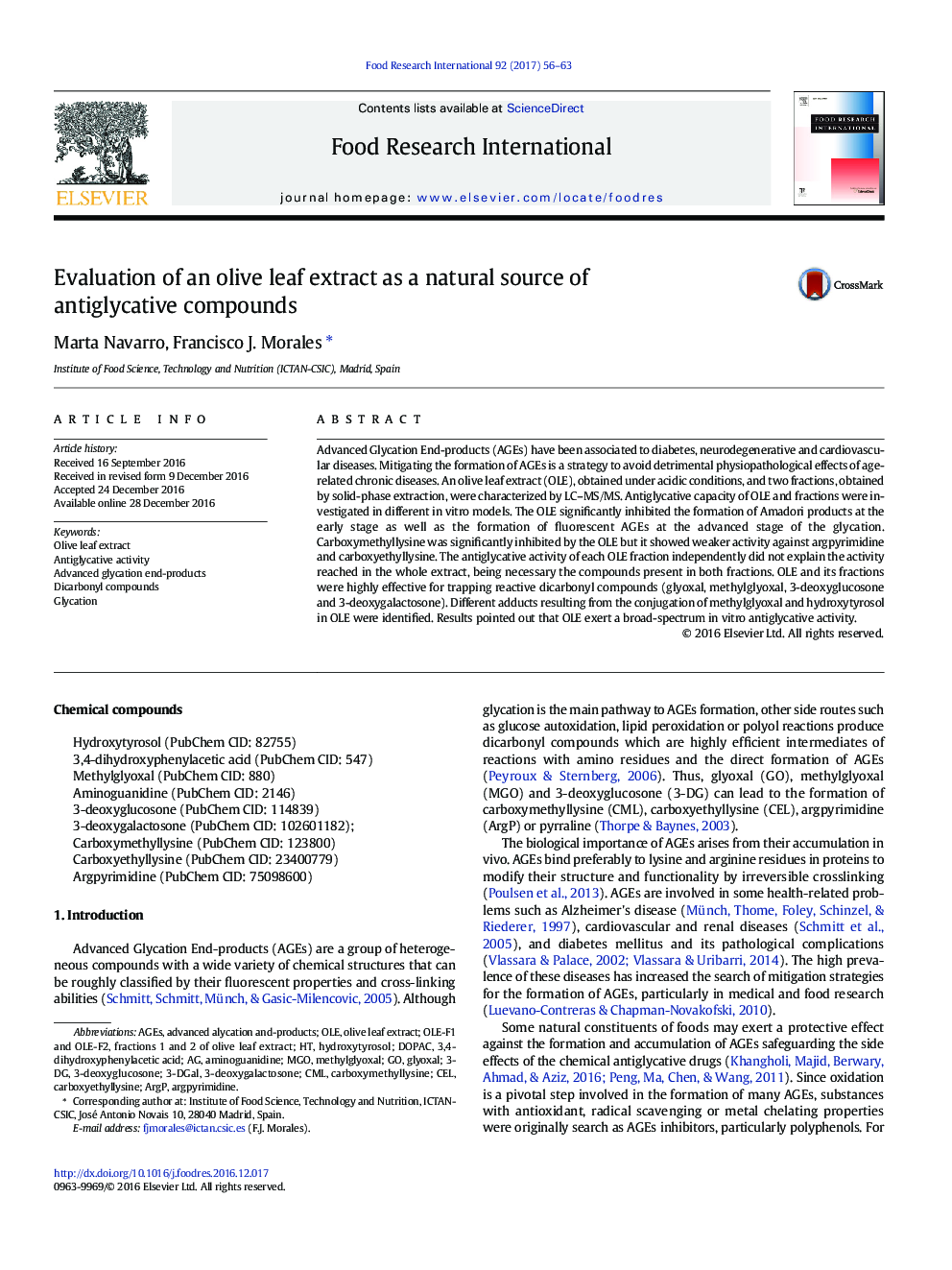| کد مقاله | کد نشریه | سال انتشار | مقاله انگلیسی | نسخه تمام متن |
|---|---|---|---|---|
| 5768307 | 1628458 | 2017 | 8 صفحه PDF | دانلود رایگان |
- An olive leaf extract obtained by acid extraction was characterized.
- The antiglycative activity of the extract is mainly exerted at the advanced stage.
- Carboxymethyllysine was more efficiently inhibited than argpyrimidine.
- The main mechanism of action is mediated by direct trapping of dicarbonyl compounds.
Advanced Glycation End-products (AGEs) have been associated to diabetes, neurodegenerative and cardiovascular diseases. Mitigating the formation of AGEs is a strategy to avoid detrimental physiopathological effects of age-related chronic diseases. An olive leaf extract (OLE), obtained under acidic conditions, and two fractions, obtained by solid-phase extraction, were characterized by LC-MS/MS. Antiglycative capacity of OLE and fractions were investigated in different in vitro models. The OLE significantly inhibited the formation of Amadori products at the early stage as well as the formation of fluorescent AGEs at the advanced stage of the glycation. Carboxymethyllysine was significantly inhibited by the OLE but it showed weaker activity against argpyrimidine and carboxyethyllysine. The antiglycative activity of each OLE fraction independently did not explain the activity reached in the whole extract, being necessary the compounds present in both fractions. OLE and its fractions were highly effective for trapping reactive dicarbonyl compounds (glyoxal, methylglyoxal, 3-deoxyglucosone and 3-deoxygalactosone). Different adducts resulting from the conjugation of methylglyoxal and hydroxytyrosol in OLE were identified. Results pointed out that OLE exert a broad-spectrum in vitro antiglycative activity.
108
Journal: Food Research International - Volume 92, February 2017, Pages 56-63
